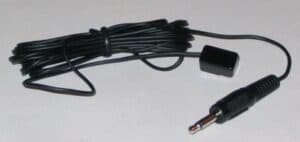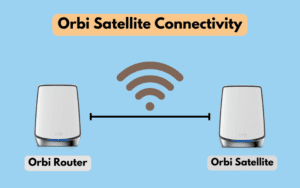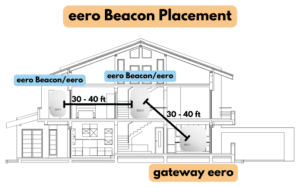Do Laptops Have IR Blasters? (FULLY Explained!)
We’re reader-supported; we may earn a commission from links in this article.
So you may know what an IR blaster is, but the question that’s on your mind would most probably be this: “Do laptops have IR blasters?”
This question definitely makes sense, given that this can be really convenient for a smart home!
I myself wondered about this too, so after doing some research on this, I came up with a definite answer.
Here’s what I found:
Most laptops do not have IR blasters. Only certain older laptop models have IR blasters. The vast majority of modern laptops do not have any IR capabilities anymore because it is superseded by Bluetooth Technology. However, individual IR blasters can still be plugged into laptops to give them IR capabilities.
Now that you know that laptops do not have IR blasters, we can now dive into the caveats you need to know too!
Read on for more:
What Is an IR Blaster?
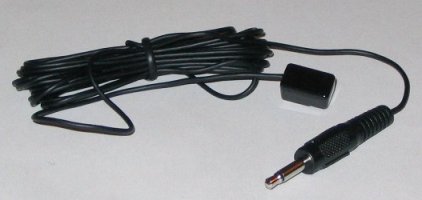
Before we dive into whether your laptops have IR blasters, we need to know what are IR blasters. If we don’t know what IR blasters are, you’ll have a hard time knowing whether it can be used to control IR devices too.
An IR blaster is an infrared device that emits infrared light that can be used to control IR-enabled electronic appliances through their IR sensors.
IR blasters are not to be confused with IR sensors. IR blasters emit, whereas IR sensors receive IR signals.
There actually is a difference between IR blasters and IR sensors; the former sends signals, and the latter receives them.
Why Do Laptops Not Have IR Blasters?
Earlier, I mentioned that most laptops these days don’t have anymore IR blasters built-in within their casings.
It is only the older models of laptops that required IR capabilities for wireless communication that had IR blasters.
The large majority of laptops do not have IR blasters because of more powerful, stable, and longer-ranged Bluetooth technology. This enables laptops to perform wireless connections with local devices more effectively.
Thus, IR blasters have been quickly phased out over the years!
How To Know If My Laptop Has An IR Blaster?
Okay, this is the important part! You need to figure out if your laptop even has an IR blaster. Here are 2 ways that you check:
1) Check Laptop Exterior
Firstly, you’re gonna want to look around at the exterior of the laptop to look for a small dark red window on the back or sides of your laptop.
It usually is small and easy to miss.
You can take this as a quick hint as to whether your laptop has an IR blaster.
2) Check Device Manager
In order to confirm that your laptop has an IR blaster, you’ll need to check it in your laptop settings:
- Click the Windows “Start” button or press the “Windows” button on your keyboard to bring up the Start menu.
- Start typing “Device Manager” and the the Device Manager will pop up. Click on it.
- Look for “Infrared Devices” in the list. If it is not present, then your laptop does not have an IR blaster. If your laptop does have an IR blaster, it should read “Infrared Devices”
If you don’t have an IR blaster on your laptop, it will look like this:

If you do have an IR blaster on your laptop, it will look like this:
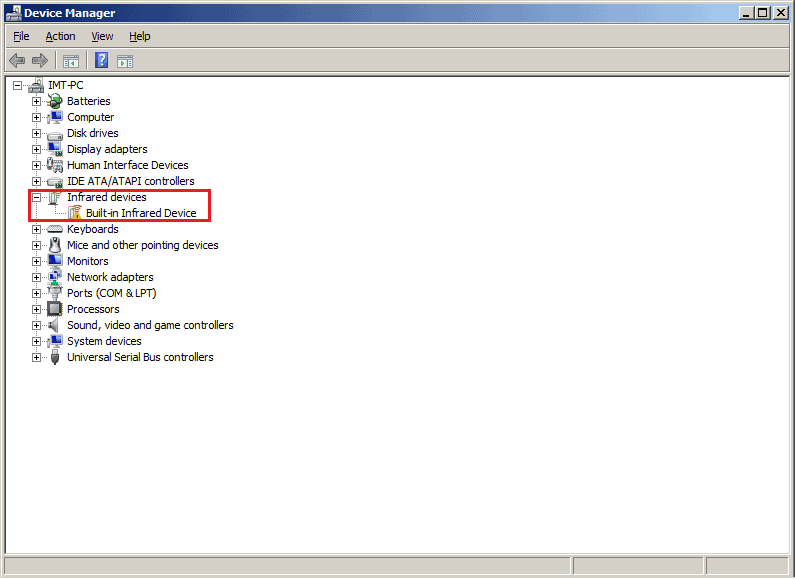
How To Give Laptops IR Blaster Capability?
As most laptops do not have IR blasters these days, many online have done workarounds to give their computers the capability. I’ve compiled how they do it here:
1) Purchase a USB Infrared Blaster
Find a USB infrared blaster that you can plug in to a laptop. This will give your laptop IR blaster capability. This can also provide IR capabilities to a desktop.
2) Download A Remote Application For Infrared Blasters
Now you’ll need to install a remote application that can work together with your IR blaster of choice!
Common programs include the Proximis NetRemote, Proximis Girder, and IRCommand2 Universal Remote Control Software will work with USB IR blasters.
Once that’s set up, you’ll be able to control any IR-enabled device such as your air-conditioner, TV set, or audio device from your laptop/desktop.
3) Connect Infrared Blaster To Your Laptop
You’ll need to connect the cable of the IR blaster to your laptop via an empty USB-A port on your laptop. Your laptop should automatically started downloading the drivers require for the usage of the IR blaster.
Once you’ve completed this install process, you should be able to check “Device Manager” to see if you have an item listed as “Infrared devices”.
It should show up as something like this:
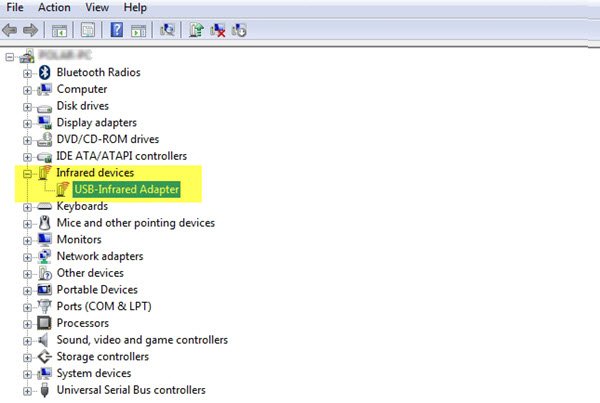
4) Launch the Remote Application and Configure It
Next, you’ll need to launch the remote application that you have installed previously and set up the remote.
You need to find an option to select the desired USB IR blaster as your default communication device.
5) Setup IR Devices
Next, you’ll need to set up the IR devices within the remote application.
It should either have options to scan for nearby IR devices or for you to teach the remote application which are the IR devices you want to pair with.
This pairing process will take a series of turning off and on the IR-enable devices in your home.
If somehow this does not work out well, you should refer to the device’s user manual to check if there’s any way you can enter the code manually to pair with the IR blaster connected to your laptop.
6) Postition The IR Blaster Well
Next, you’ll need to make sure you position the IR blaster well in line of sight of the IR devices that you wish to control. This is because infrared does not travel through walls.
7) Test Out Controlling The IR Devices
Finally, you should rename the IR devices in the remote automation app of choice to suit the living spaces in your home.
For example, if you have multiple IR devices of the same type like lights, you can name them “Bed Light Left” and “Bed Light Right” to differentiate the two.
Then you can test out the on-screen control on your laptop to see if the more specific controls like switching channels on a television of adjusting temperature on an air-conditioner work correctly.
Secret Workaround For Using IR Blasters With Laptops
If you’ve read until this point, I thought to give you a little hint on how I use my IR blasters separately from my laptop and even my phone.
With this method, you don’t need to have your IR blaster plugged into your laptop all the time or to your phone’s USB-C or lighting connector all the time!
Here’s how I do it. I use an IR/RF Blaster Smart Remote Control from Broadlink!

As this device is smart, it can be easily controlled using Wi-Fi instead of being reliant on a laptop. The IR/RF blaster can run on a USB-powered socket while being connected to Wi-Fi.
What’s best about it is that this can be further linked to the Google Home app, where you can use a voice assistant on your phone or on a Nest Mini to control your devices by voice. I personally do this to control my RF-enabled ceiling fan and IR-enabled air-conditioner.
The best part about this is that I can do all this wirelessly!
With some easy setup of the Broadlink app connected to Google Home’s Home control service. I can easily choose however method I want to control my devices: through an app on my phone, through voice, or through my laptop.
Google Home devices can be controlled using your laptop by using either getting Google Assistant on Windows or using an Android Emulator. Here’s an article by livewire on this!
Although I would suggest just using your phone on your phone! That’s the most convenient!
Can I Use My Laptop As a TV Remote?
Laptops can be used as TV remotes if they have an inbuilt IR blaster or an external USB IR blaster connected to them. IR blasters in laptops can act as universal remote controls that send infrared signals as commands for a TV remote to execute, such as switching the channel and adjusting the volume.
Do Phones Have IR Blasters?
Phones do have IR blasters. Most phones released by Xiaomi do have IR blasters. An exterior check, specifications check, and an IR checker app are ways to check if phones have IR blasters. Phones that have IR blasters are able to act as universal remote controls for air-conditioners and TV sets.
To learn more learn whether your phone has an IR blaster or not.
Final Thoughts
Now that you know that some laptops do have IR blasters, this can be really handy in controlling IR devices around the house.
On top of that, IR blasters can be added to laptops to give them the IR capability they lack.
With the many usages of an IR blaster acting as a universal remote control for IR devices, the applications for this are many!
Thanks for reading this post and stay smart!

Justin Chia
Justin is the author of Justjooz and is a data analyst and AI expert. He is also a Nanyang Technological University (NTU) alumni, majoring in Biological Sciences.
He regularly posts AI and analytics content on LinkedIn, and writes a weekly newsletter, The Juicer, on AI, analytics, tech, and personal development.
To unwind, Justin enjoys gaming and reading.




